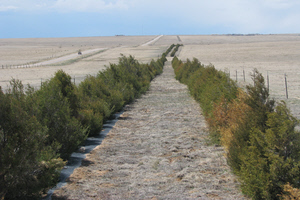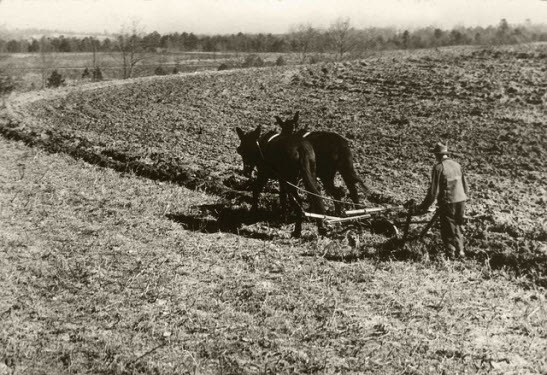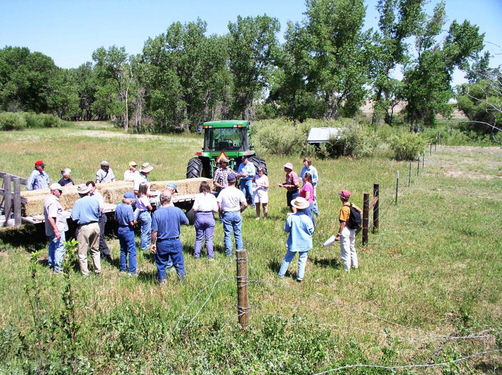Then & Now
Soil Conservation Districts were an outgrowth of a difficult period of our nation’s history. In the 1930’s, our nation experienced the greatest depression in US history along with dust storms caused by a severe and sustained drought in the Great Plains. These storms brought clouds of dust from the west to the Atlantic Seaboard and beyond. The destruction of millions of acres of land through erosion was a grave problem not only to the farms, but the nation itself.
The Double El Conservation District consists of portions of Elbert, El Paso and Lincoln Counties for approximately 631,590 acres and is governed by a board of 5 elected officials.
Conservation Districts’ Purpose
Conservation Districts improve the quality of life for every American by focusing on natural resources, problems and solutions by:
- Representing both private and public landowners
- Bringing together state, federal and private sector dollars and resources to solve Colorado’s natural resource problems
- Working to prevent soil erosion
- Conserve and develop water resources
- Improve water quality
- Control flooding preserve wildlife habitat
- Improve cropland, range-land and forests
Many agencies and programs exist to deliver solutions. Learn more about our Partners in Conservation.
About Us
Double El Conservation District provides the following services to landowners:
- Annual Tree Purchase Program
- Tree Survival Accessories
- Grass Seed for Native and Introduced Species
- Assistance with tree species selection and wind break design
- Distribution of educational information to schools, groups, and individuals
- Conservation Educational Workshops
- Living snow fence projects
- Scholarships for youth
- Teachers for Conservation Education
- Funding assistance to install conservation projects

Double El Conservation District is in the Upper Arkansas Watershed and has a very active annual tree program to aide those in our area with their conservation needs.
We have an active partnership with El Paso and Elbert County to establish Living Snow Fences along county roads for public safety and protection from wind erosion.
In 2002, Double El constructed an office building to provide leased office space to USDA Farm Service Agency and Pines & Plains Libraries District Simla Branch.
Moments in History
Soil Scientist Hugh Hammond Bennet was testifying on Capitol Hill about the erosion problem, when he threw back the curtains to reveal a sky blackened with dust. Congress unanimously passed legislation declaring soil and water conservation a national priority.

1935 -1937
In 1935, the Soil Conservation Service, formerly the Soil Erosion Service, was set up as a permanent agency under the United State Department of Agriculture, with the authority to work directly with landowners to apply conservation practices to the land. The Agency has now become the Natural Resources Conservation Service (NRCS).
Through conservation efforts, dust bowl lands were brought back into agricultural production by World War II. In 1937, President Franklin Roosevelt wrote the governors of all states recommending legislation that would allow landowners to form soil conservation districts.
Colorado enacted its law only three months later. The movement caught on across the country and the nation now boasts nearly 3,000 conservation districts dedicated to conserving our natural resources.
Colorado’s Conservation Districts represent private landowners’ interests in conservation planning and practices. They have led this charge since they were created by the Colorado State Legislature in 1937.

1970 -Today
Double El Soil Conservation District was established in 1971 by a referendum to consolidate Big Sandy Soil Conservation District and Horse Rush Creek Soil Conservation Districts that were established in September 14, 1939.
Double El Conservation District provided heavy equipment services in the 1960-1970’s.
As of 1989, almost the entire state of Colorado is included in the 76 conservation districts, encompassing some 63 million acres. While Conservation Districts are technically considered “local governments”, they fall under the statutory guidance of the State.
In 2002, the 76 Colorado “Soil Conservation Districts” removed “Soil” from their name to more accurately reflect that emphasis not be solely concerned with soil, but for all the natural resources.

